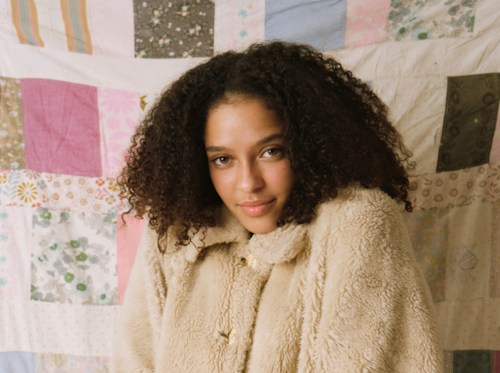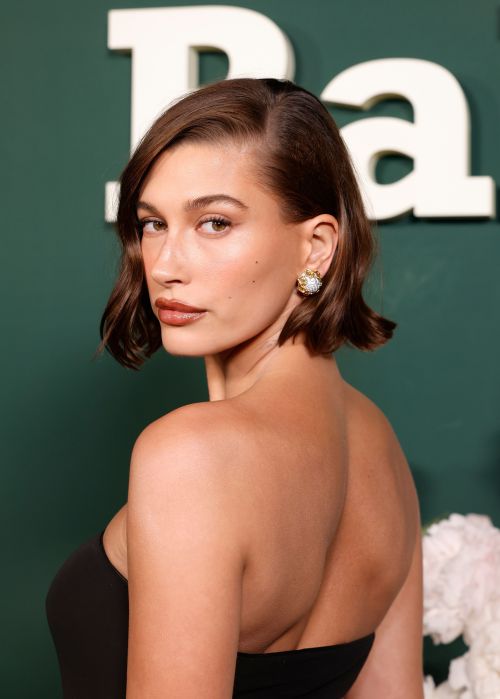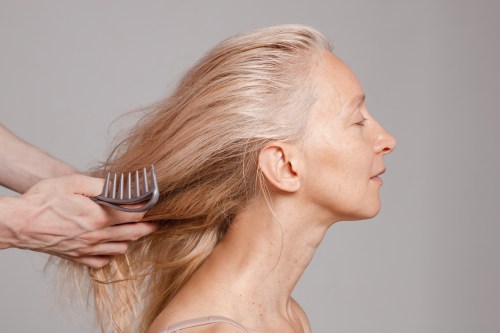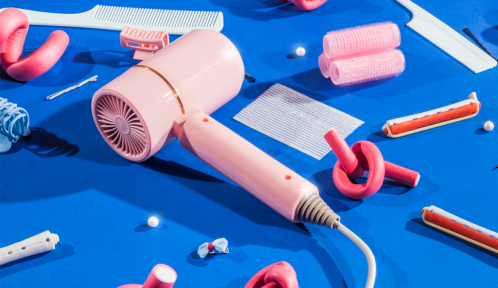Our editors independently select these products. Making a purchase through our links may earn Well+Good a commission
Here’s How To Air Dry Your Hair (Even When It’s Cold Out) for Best Results
Air drying your hair is easy and beneficial if you follow a few steps. Inside, our pros share how to air dry your hair minimal damage.

If you’ve mastered the art of air-drying hair beyond walking out of the house with water sopping down your back, congratulations. Some of us (me) have had a learning curve. I’ve tried the wet buns, gone full-fledged wet hair in the wild, and learned the hard way (via some breakage) that you must be intentional with air drying your hair for best results.
It may seem counterintuitive since air drying typically spares your hair extra damage caused by hot tools, but not following the proper steps can leave you with more stress than you bargained for. This is especially true if you’re tempted to air dry your hair while it’s cold outside (life happens, but try not to do this). It’s not an impossible task, though. To help, we got tips from professional hairstylists Sophie Rose Gutterman and Irinel De León on the best way to air dry your hair—even in the cold—once and for all.
Is it safe to air-dry your hair in winter?
Okay, we understand sometimes the only opportunity you have to shampoo your hair is before work on a below 40-degree morning. However, it’s important to remove as much moisture from your hair as possible before going outside and using the right products to keep your hair cuticle in tact is critical. “The hair becomes a lot more vulnerable when wet, especially because water molecules expand, which can make it more likely to break,” De León says. On top of putting your hair at risk for breakage, cold weather also works against the goal of fast air drying, since a colder climate will take longer to get your hair completely dry. However, if you absolutely must run out in the cold with intention of air drying, here are some steps to prevent your hair from forming icicles.
How to safely air dry your hair
Start on clean hair
If you’re air drying wet hair, you’ve probably already shampooed it. Still, if soft and shiny is your end game, consider using a clarifying shampoo to make sure your base is clean. A thorough shampoo will keep your roots and lengths from being weighed down by oils (natural or added).
Thoroughly towel dry your hair
Once your hair is washed and conditioned, a microfiber towel will be your best friend. Riley says to towel dry thoroughly when you get out of the shower. The key here is gently squeezing the moisture from your hair versus scrubbing it off with your towel (which creates friction and may lead to frizz). Of course your favorite t-shirt will do the job (especially if you’re in a pinch for time), but any microfiber towel will come in handy.
Use lightweight products on damp hair
For best results, post-air dry, you must do some prep work. To help reduce frizz and add shine to the finished look, Riley recommends adding product to your hair once it’s towel-dried. Opt for something lightweight like a conditioning mist or serum. “Heavier products will take much longer to dry,” she explains, so avoid thicker creams (unless that’s your preference or your hair needs it). De León says the Ouidad Advance Climate Control Styling Cream ($26) is an excellent option for curly or wavy hair, and it’s great to use year-round. “The formula has a UV protectant, which also protects the strands from environmental aggressors,” she says. Riley uses the Unite 7 Seconds Detangler and recommends combing some through damp hair, gathering it into a twist, and using a claw clip to hold it up while you air dry.
Detangle while wet
Before you even consider air drying your hair, make sure your hair is completely detangled. Keeping your hair tangled and knot-free will help the finished product be as smooth as possible. Detangle your hair in the shower before using your microfiber towel, and give it another comb-through once you’ve applied your leave-in product. Most pros recommend the Wet Brush, which is great for detangling in the shower. If you have curly hair, you might like a tool like Felicia Leatherwood’s Detangling Brush, which glides through thick textures without snagging.
When in doubt, use a blow dryer
Okay—I know what you’re thinking—what’s the point of air drying my hair if I have to use a blow dryer? But hear me out: If you can budget five extra minutes in your routine to jump-start the process with a blow dryer, air drying will yield much better results (especially if you’re air drying in winter). “Don’t be afraid to plug in your dryer and to help get the job done,” De León says. You can use your hair dryer or diffuser to blow heat at the roots of your hair before you continue the air-drying process. If your hair is curly, use the diffuser for a few minutes, then let your hair set naturally, this will ensure that the roots (which is typically the last area to dry) gets a head start.
Lean on low-maintenance styles to aid the process
If you want to achieve curls, waves, or tighter-looking coils you can do so while air drying. The trick here, is utilizing braids or twists while your hair is damp, and unraveling your style once your hair is completely dry. So, think: adding loose braids or twists in your hair and pinning them up (like Riley suggested above). You can also utilize a mousse or gel at this step if you want more hold. Once your hair is completely dry, you should be left with your desired pattern which can also last you a few days.
How long does it take for hair to air dry?
Everyone’s hair is different, so the amount of time it takes to air dry will vary based on your hair type, texture, and the elements. “Depending on your hair’s density, air drying can take anywhere from 15 mins to hours,” Gutterman says. Of course, if you have thin, fine hair, it will dry much faster than someone with dense, curly hair. So, if your hair type takes longer to dry, but you’re in a pinch for time, you should use a hair dryer (or budget in enough time for air drying).
Is it okay to sleep with wet hair?
Sleeping with wet hair isn’t something you should make a habit of because it can lead to breakage (especially if it’s wrapped in a tight bun). Also, the thought of a sopping wet pillow is far from relaxing. However, if you must doze off before your hair dries, you can put it into braids or a loose bun using a silk hair tie. If you have thicker hair, you may still feel the roots of your hair damp when you wake up. In that case, you should use a blow dryer at the roots to ensure everything is dry before going about the day.
Final takeaway
If you’re weary about air drying your hair because you’re concerned about frizz there are a few things to understand: a) Frizz is totally normal and b) you can’t completely eliminate frizz, but you can help minimize it with products and techniques. Ultimately, our pros agree that working on damp detangled hair is the best base for products. Then, ensuring that you use just enough of the right products and making sure your hair is completely dry before touching and fluffing, will make your air drying process a breeze.
Sign Up for Our Daily Newsletter
Get all the latest in wellness, trends, food, fitness, beauty, and more delivered right to your inbox.
Got it, you've been added to our email list.










